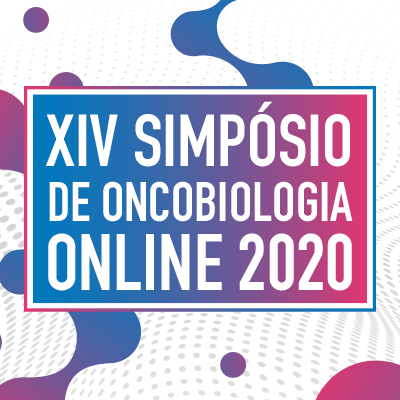Proceedings of Oncobiology Symposiums
Proceedings of XIV Oncobiology Symposium
HSA INTERACTION AND CYTOTOXIC EFFECTS OF STYRYL-MESOIONIC DERIVATIVES ON ADULT T-CELL LEUKAEMIA/LYMPHOMA ASSOCIATED WITH HTLV-1 INFECTION
How to cite this paper?
To cite this paper use one of the standards below:
How to cite this paper?
INTRODUCTION AND OBJECTIVE: Cancer implies the uncontrolled or malignant growth of cells that cause innumerable diseases that occur around the world. Among these diseases, the incidence of leukemia and lymphoma was estimated at around one million new cases. Human T-cell lymphotropic virus type-1 (HTLV-1) is an etiological agent of the adult T-cell leukemia/lymphoma (ATLL) and is an aggressive malignancy. ATLL treatment is restricted, and patients with aggressive disease have poor prognoses due to the state of immunosuppression and resistance of the leukemic cells to multiple drugs. In our previous studies with mesoionic compounds containing a substituted styryl moiety, important results for in vitro cytotoxic activity in various types of tumor cells, including leukemias and in vivo antitumor effects have been observed. Human serum albumin (HSA), one of the major proteins in the human blood circulation system, takes part in many physiological functions. HSA has a remarkable capacity for reversible binding with drugs, which helps in improving their solubility, protect their oxidation in plasma and decrease toxicity. Because of these exceptional abilities, HSA is one of the key targets to predict the pharmacokinetic profile for the development of a potential therapeutic agent. Thus, in this work, we evaluated the in vitro effect of five styryl-mesoionic derivatives on C91 and MT2 cell lines infected with HTLV-1 and Jurkat cell line. The preliminary pharmacokinetic profile of these styryl-mesoionic derivatives via affinity for HSA, were also investigated by multiple spectroscopic techniques, combined with molecular docking. MATERIAL AND METHODS: Cell viability of compounds was assessed by MTT assay (3-(4,5-dimethyl-2-thiazolyl)-2,5-diphenyltetrazoliobromide) after incubation with different concentrations of compounds for 24 hours. The HSA binding affinity was investigated using multiple spectroscopic techniques (fluorescence and circular dichroism) combined with molecular docking. RESULTS AND CONCLUSION: IC50 values of all compounds were in the range of 1.51-7.70 M in HTLV-1-infected and non-infected cells. The interaction between HSA and the mesoionic compounds is spontaneous and occurs via a ground-state association. The binding does not perturb both secondary and surface structure of the albumin significantly, and the main binding pocket is the site I (subdomain IIA), where Trp-214 residue can be found. Overall, all the mesoionic compounds presented good binding parameters toward serum albumin, indicating feasible biodistribution in the human bloodstream. These promising results suggest that the styryl-mesoionic derivatives may be useful in the future for chemotherapeutic treatment of leukemias/lymphomas infected with the HTLV virus.
mecanismo de ação
Vitor Hugo Luna Rocha de Almeida
Qual o mecanismo de ação proposto para estes compostos mesoiônicos, que explique a atividade anti-tumoral?
- 2 answers
conclusões
Vitor Hugo Luna Rocha de Almeida
Os autores concluem "These promising results suggest that the styryl-mesoionic derivatives may be useful in the future for chemotherapeutic treatment of leukemias/lymphomas infected with the HTLV virus."
Entretanto, a linhagem celular Jurkat (não infectada pelo HTLV) é tão sensível aos compostos mesoiônicos quanto às demais células testadas. Existe, de fato, algum mecanismo ou evidência que demonstre essa seletividade por células infectadas por HTLV? Os autores já testaram esses compostos em outros tipos tumorais e linhagens não-tumorais?
- 3 answers
Juliana Echevarria-Lima
Prezado Vitor,
Os compostos não forma testados em células não tumorais e quanto às células tumorais forma testadas apenas em células de leucemia T, infectada e não infectada. Sendo que as não infectadas parecem ser mais sensíveis ao tratamento.
Muito obrigada.
Vitor Hugo Luna Rocha de Almeida
Obrigado Danilo e Juliana, e boa sorte nas próximas etapas do trabalho!
Danilo Sousa-Pereira
Obrigado, Vitor. Abraços.
Avaliação do pôster
Paloma Souza
Olá Danilo,
Boa Tarde! Parabéns pelo seu pôster.
Seguem algumas perguntas.
1- Há quanto tempo você está no Doutorado?
2 - Poderia explicar melhor sobre os derivados mesoiônicos?
3 - Quais os efeitos biológicos desses derivados serão avaliados no estudo?
Obrigada
Paloma Souza
- 1 answer
Danilo Sousa-Pereira
Boa tarde, Paloma. Tudo bem? Desde já, obrigado pelas considerações.
Respondendo suas perguntas:
Defendi o doutorado na UFRRJ em 2019. Os mesoiônicos apresentados neste trabalho pertencem a uma das classes de compostos sintetizados neste período de pesquisa. Esses compostos são caracterizados por possuírem sistemas heterocíclicos pentatômicos suportando cargas positivas, contrabalanceadas por cargas negativas no átomo alfa - na cadeia lateral.
Os derivados aqui apresentados e outros compostos também sintetizados foram avaliados, quanto a atividade anticâncer, frente a células leucêmicas infectadas ou não por HTLV, frente a linhagem celular de osteossarcoma - MG-63 e, frente a células derivadas de hepatocarcinoma humano - Hepg2.
Abraços,
Danilo Sousa-Pereira.
- 1 Universidade Federal Rural do Rio de Janeiro
- 2 Universidade Federal do Rio de Janeiro
- Drugs and/or Natural Products Therapy
Streamline your Scholarly Event
With nearly 200,000 papers published, Galoá empowers scholars to share and discover cutting-edge research through our streamlined and accessible academic publishing platform.
Learn more about our products:
How to cite this proceedings?
This proceedings is identified by a DOI , for use in citations or bibliographic references. Attention: this is not a DOI for the paper and as such cannot be used in Lattes to identify a particular work.
Check the link "How to cite" in the paper's page, to see how to properly cite the paper


Juliana Echevarria-Lima
Prezado Vitor,
Um dos derivados estudados apresentou capacidade de interagir com DNA (5b), mas nosso ensaio não determinou as características dessa interação, se há ou não intercalação. Além disso, todos foram capazes de induzir de forma rápida a produção de espécies reativas de oxigênio em células infectadas pelo HTLV-1. Esse também pode ser um mecanismo de ação que leva à morte celular.
Vitor Hugo Luna Rocha de Almeida
Obrigado pelos esclarecimentos!